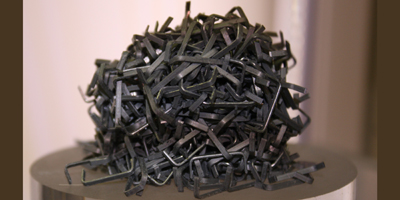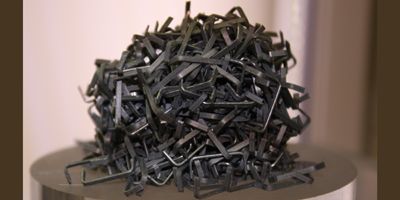U-shaped Grains Get Clingy
The shape of grains in granular materials can have a large effect on their collective physics. A new study explores u-shaped grains and how they bind together through entanglements. In experiments described in Physical Review Letters, the researchers found that free-standing piles of metal staples held together longest when the staple “arms” had a particular length. To explain this optimum shape, the authors develop a model that may apply to other collections of irregular shaped objects.
Physicists have long been interested in how sand pours down a slope or how nuts pack inside a box. However, not much work has been done with “bent” or concave grains that can intertwine. Examples include polymer networks and anisotropic colloids, as well as the rafts that certain ant species form by interlocking limbs and mandibles.
Nick Gravish of the Georgia Institute of Technology in Atlanta and his colleagues decided to investigate a simple concave grain: the common staple. In their experiments, the researchers varied the length of the staple arms, while keeping the width constant. The team formed piles of uniform staples and then shook them up and down until the piles eventually collapsed. Staples with a length-to-width ratio of about remained upright the longest. The scientists explained their observations using simulations and theory. It turns out that lengthening the arms of a staple increases the number of entanglements with neighbors, but conversely decreases the packing density. Staples that balance these two effects create the most stable piles. – Michael Schirber





